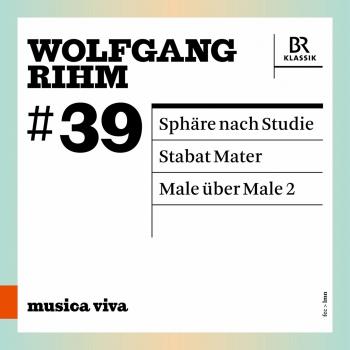Various Artists - Wolfgang Rihm
Biography Various Artists - Wolfgang Rihm
Wolfgang Rihm
was born on 13 March 1952 in Karlsruhe, a city near the French and Swiss borders, at a stone’s throw from Strasbourg and Basel, two of the many places where he and his music are at home. He lives there to this day in a spacious apartment not only full of books and scores – those one takes for granted – but also of paintings by contemporary artists, mainly by Kurt Kocherscheidt, the Austrian painter with whom Rihm was befriended and to whom he has dedicated a number of works.
Rihm is a composer, professor of composition at the Music Academy of his native city (where his students included Vykintas Baltakas and Jörg Widmann), a remarkable writer on music with several books to his name, including collections of his articles and interviews. He also sits on a number of influential committees in Germany and has a say in decisions affecting the working conditions of his fellow musicians.
No doubt about it: Wolfgang Rihm is a unique phenomenon, larger than life. His knowledge of music (the art and craft of composition as well as of music history from ancient times up to the present day) is vast. But he also seems to know everything worth knowing about literature, painting, architecture, philosophy and he freely draws on those as sources of inspiration. A look at the texts he has set to music is an indication of the breadth of his culture: from Homer through Hölderlin and Goethe to Rilke, Botho Strauss and Durs Grünbein.
The world he has created with his compositions which now outnumber 400 works is a veritable universe. As such, it cannot be pidgeonholed. To paraphrase the title of a well-known British film on Thomas More, he is a composer for all seasons. Rihm has written 'new music' as it is commonly called and some of his titles have become signposts in the history of post-war music. Soloists, chamber groups and orchestras programme these works as a matter of course now, they have become an integral part of the repertoire (Jagden und Formen, Chiffre-cycle, Pol -Kolchis -Nucleus). Of similar significance are the compositions which take their cue, as it were, from music of past centuries: oratorios with Johann Sebastian Bach as a point of reference (Deus Passus), orchestral pieces of Brahmsian sound and gesture (Ernster Gesang, Nähe fern 1-4), chamber music in the wake of Robert Schumann (Fremde Szenen).
Already at the age of 25, he composed a chamber opera (Jakob Lenz) that has since proved itself as probably the most often produced piece of contemporary music theatre in Germany. Jakob Lenz has been followed by a series of large-scale operas (Die Hamletmaschine, Die Eroberung von Mexico, Das Gehege, Dionysos).
Wolfgang Rihm is one of the foremost song composers of our times; his string quartets are often presented in cycles by a wide range of groups.
Rihm is a composer who puts a giant question-mark over whatever he is doing. Each new work is an answer to the question raised by the previous piece; each new work poses questions which he will seek a reply to in the composition to be written next. There come about work cycles, work families which form a web with other cycles and individual pieces. Everything is in permanent growth, work never stops, new compositions are produced, brought into intriguing relationships with other works, revised and supplemented.
If you consider that he is also a remarkable draughtsman and if you read the poem he has written for/about the trumpet concerto Marsyas, you will have to admit that Wolfgang Rihm is indeed larger than life.











